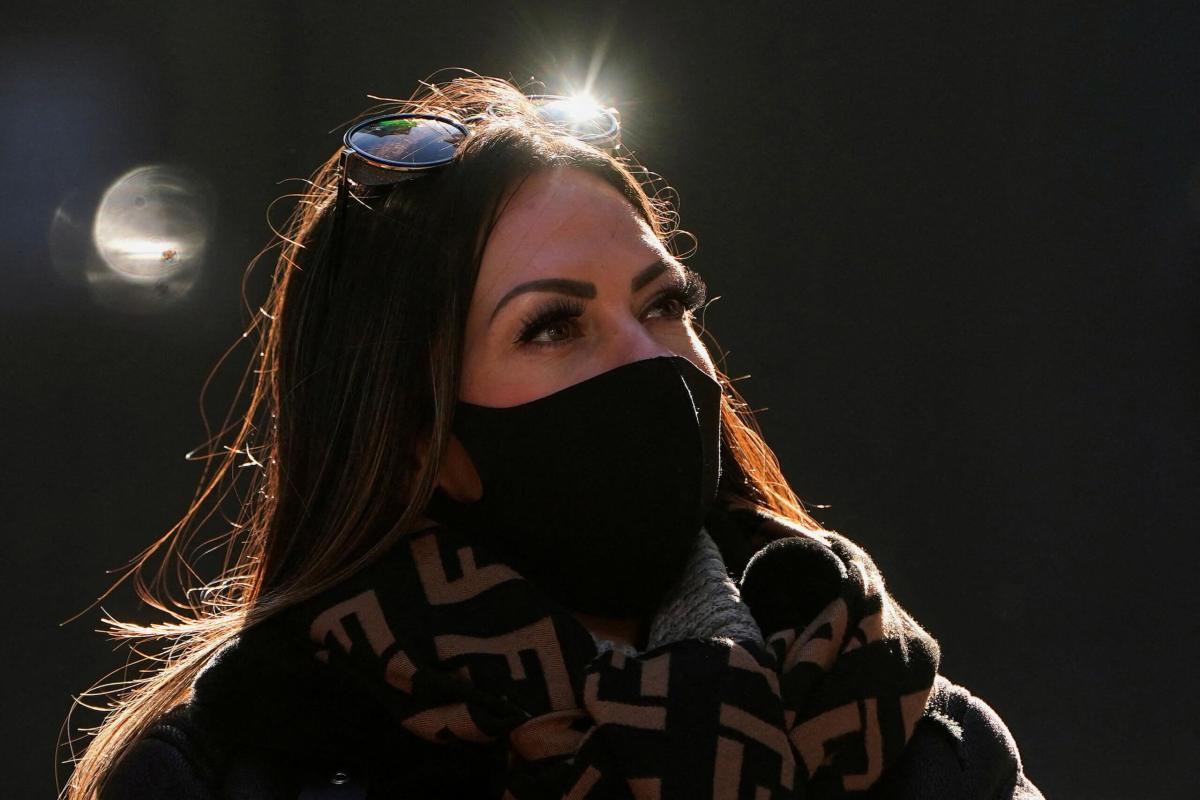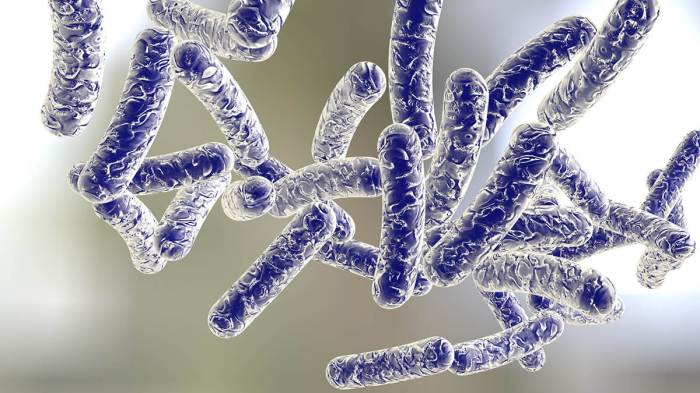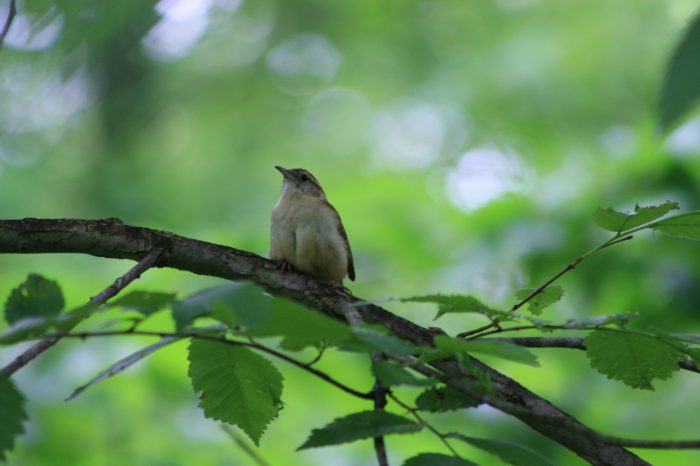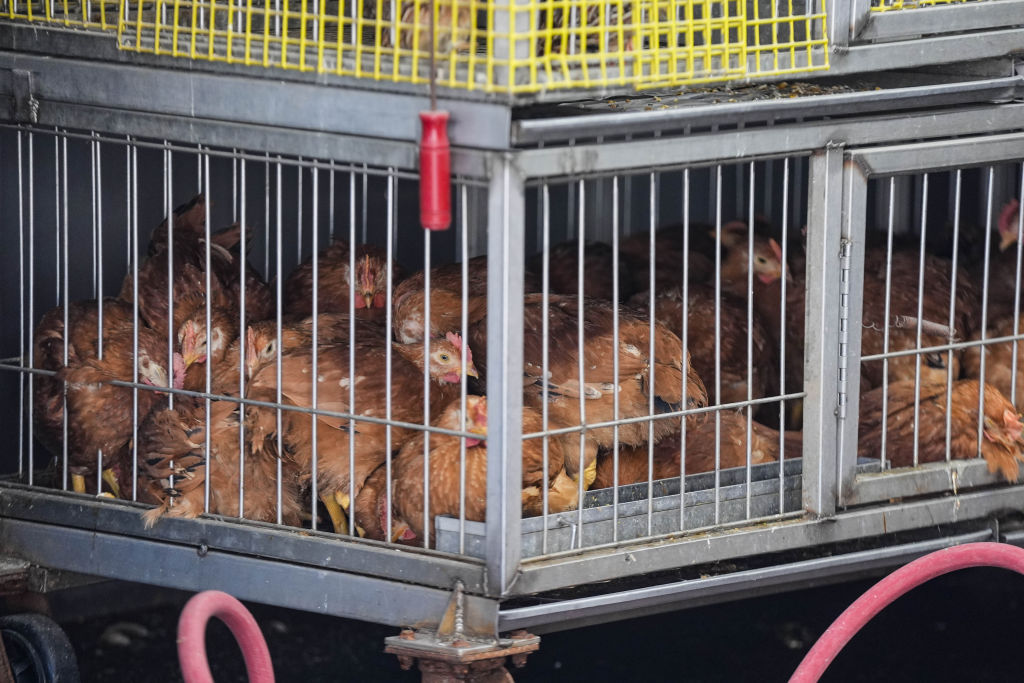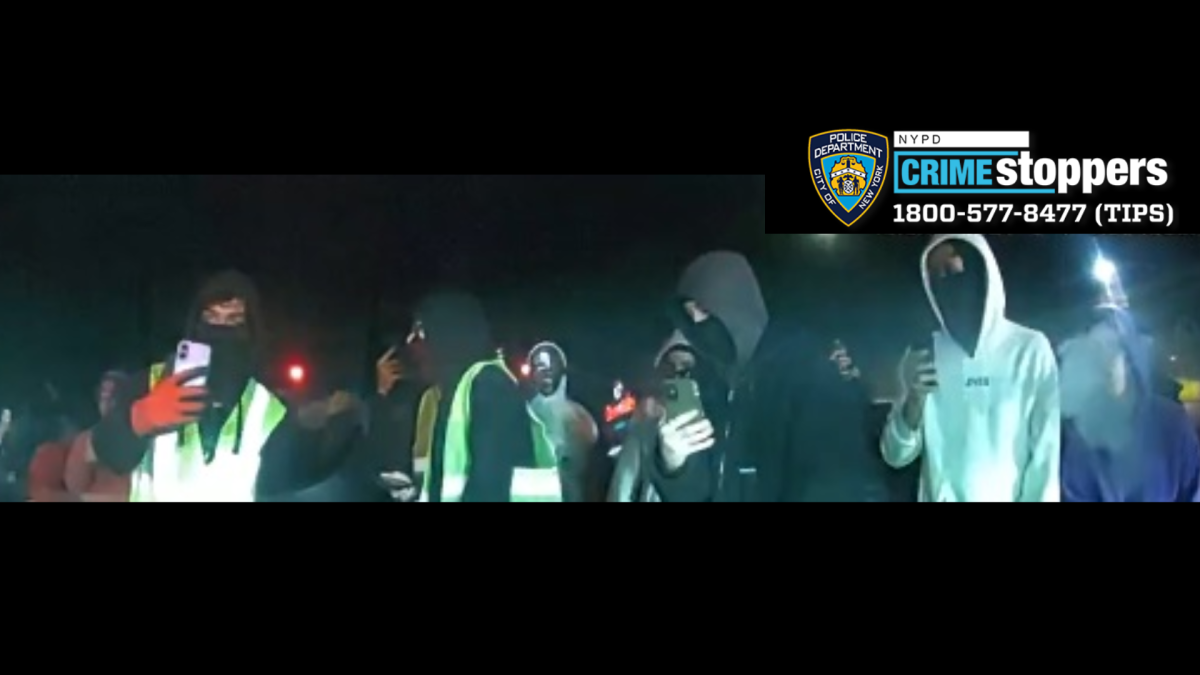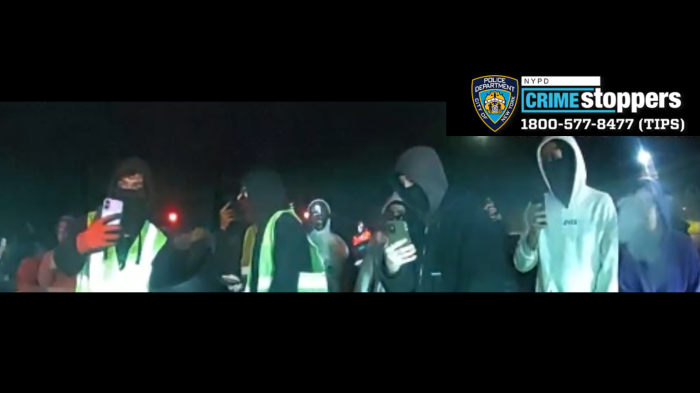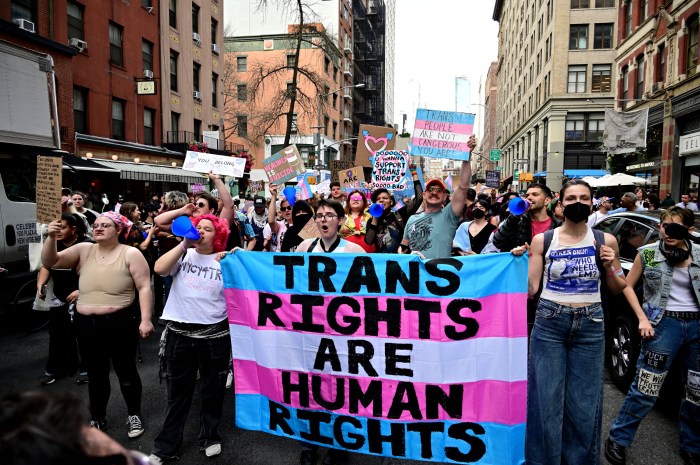Over a 15-day period, New York City saw a more than 60% decline in COVID-19 infection races and new cases — a further indication that the worst of the Omicron peak experienced during the holiday season is behind the Big Apple.
The latest data from the city’s Department of Health and Mental Hygiene found that the city’s 7-day positivity rate on Feb. 1 was down to 6%. Just two weeks earlier, on Jan. 17, that number had been 18.84%. The Feb. 1 rate represents a 68.2% drop in the positivity rate from the Jan. 17 figure.
Back on Jan. 17, the city tallied 10,740 new COVID-19 cases, but on Feb. 1, the city’s Health Department reported just 1,969 new infections that day. That means the number of new COVID-19 cases are down about 82% over the past 15 days.
The citywide transmission rate is now on the verge of falling below “very high” levels. The transmission rate for Feb. 1 was 223.73 cases per 100,000 residents, down from the Jan. 17 rate of 1,184.4 per 100,000 — a decline of about 81%.
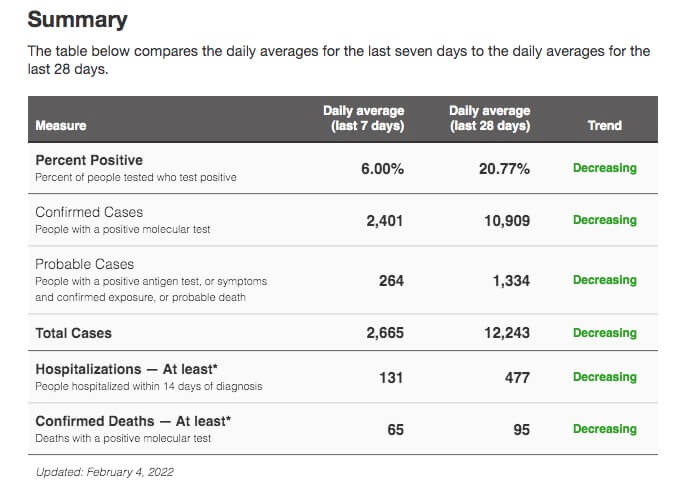
Just six New York City communities tallied a 7-day positivity rate of 10% or higher between Jan. 26 and Feb. 1. A week earlier, 53 areas across the Five Boroughs had positivity rates above 10%.
Mott Haven in the Bronx (ZIP code 10455) led the way with a 15.7% positivity rate and 279 new infections diagnosed between Jan. 26-Feb. 1. Three Queens communities also had positivity rates above 10% during the period: Flushing/Murray Hill/Queensboro Hill (11355, 12.75% positivity rate, 209 new cases); Breezy Point (11697, 10.98% positivity rate, 9 new cases); and Flushing/Murray Hill (11354, 10.54% positivity rate, 122 new cases).
The other two areas with 10% or higher positivity were on Staten Island: Annadale/Rossville (10312, 11.23% positivity rate, 172 new cases); and Lighthouse Hill/Midland Beach/New Dorp/Oakwood (10306, 10.25% positivity rate, 149 new cases).
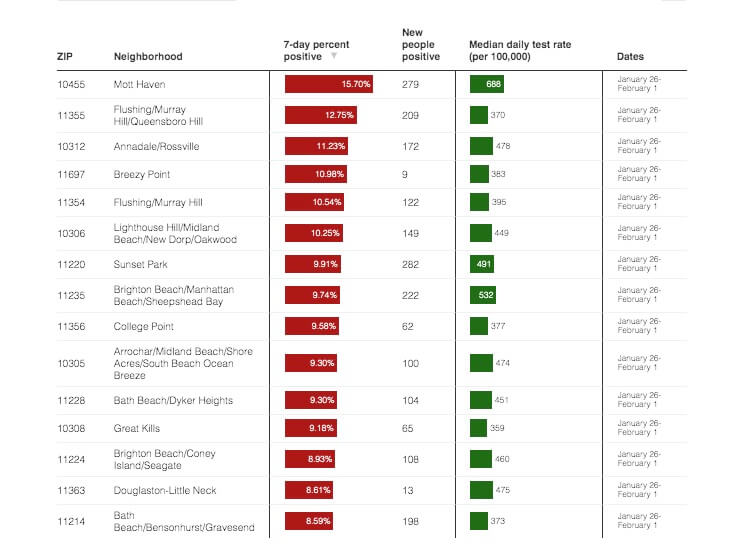
Seven NYC communities also saw 200 or more new COVID-19 cases between Jan. 26-Feb. 1. Sunset Park, Brooklyn (11220) had the most new infections of any neighborhood with 282, good for a 9.91% positivity rate.
Three other Brooklyn areas had 200 or more new COVID-19 diagnoses during the period: East Williamsburg/Williamsburg (11211, 255 new cases, 3.4% positivity), Brighton Beach/Manhattan Beach/Sheepshead Bay (11235, 222 new cases, 9.74% positivity) and Borough Park (11219, 221 new cases, 3.27% positivity).
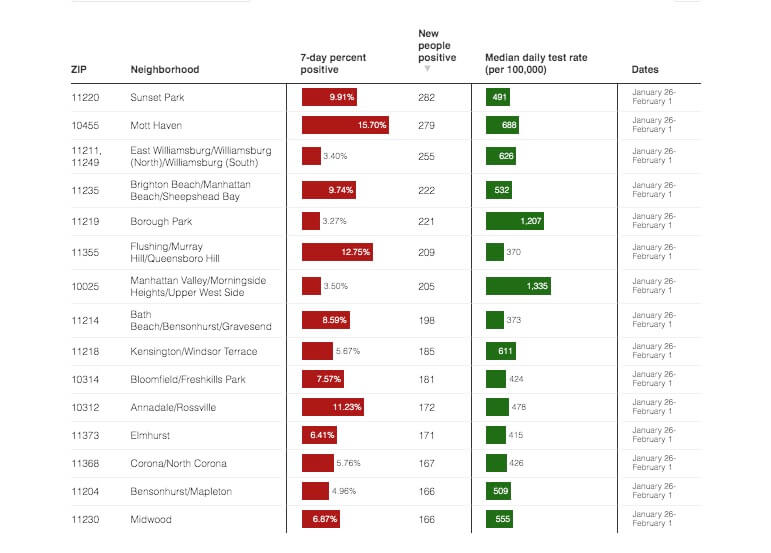
On the flip side, 17 areas of the city had less than 20 new COVID-19 cases detected between Jan. 26-Feb. 1. The fewest in the city were found in a portion of Manhattan’s Financial District (10006), which had just 5 cases and a 3.4% positivity rate.
City Island in the Bronx (10464) followed with 6 new cases and a 4.88% positivity rate, and Tribeca, Manhattan (10007, 9 new cases, 2.59% positivity rate) was tied with Breezy Point, Queens for the third-fewest new diagnoses in the city.
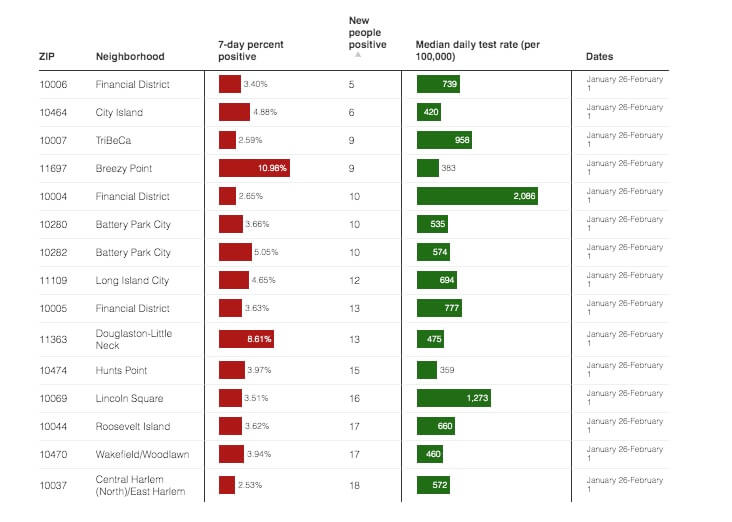
Unvaccinated New Yorkers continue to face higher risk of infection, serious illness and death than vaccinated residents, but even the number of unvaccinated residents contracting COVID-19 has fallen significantly in recent weeks. The case rate among unvaccinated residents was down from 7,403.68 per 100,000 on Jan. 15 to 2,293 per 100,000 on Jan. 22.
Even so, by contrast, the vaccinated case rate has been considerably and consistently lower — dropping from 625.93 per 100,000 on Jan. 15 to 460.21 per 100,000 on Jan. 22.
Though vaccinations and booster shots continue to provide greater protection against COVID-19 and serious infection, the vaccination effort has flattened a bit in recent weeks. The city Health Department reports that some 390,364 total doses had been administered between Jan. 17 and Feb. 1. As for additional doses (boosters), that number only grew by 197,905 during the same period.
More than 7 million New Yorkers have received at least one dose of the COVID-19 vaccine, and 6,275,870 people are fully vaccinated. With 2,739,836 fully vaccinated residents getting an additional dose as of Feb. 1, that would indicate about 43.6% of all fully vaccinated New Yorkers have gotten the booster.



